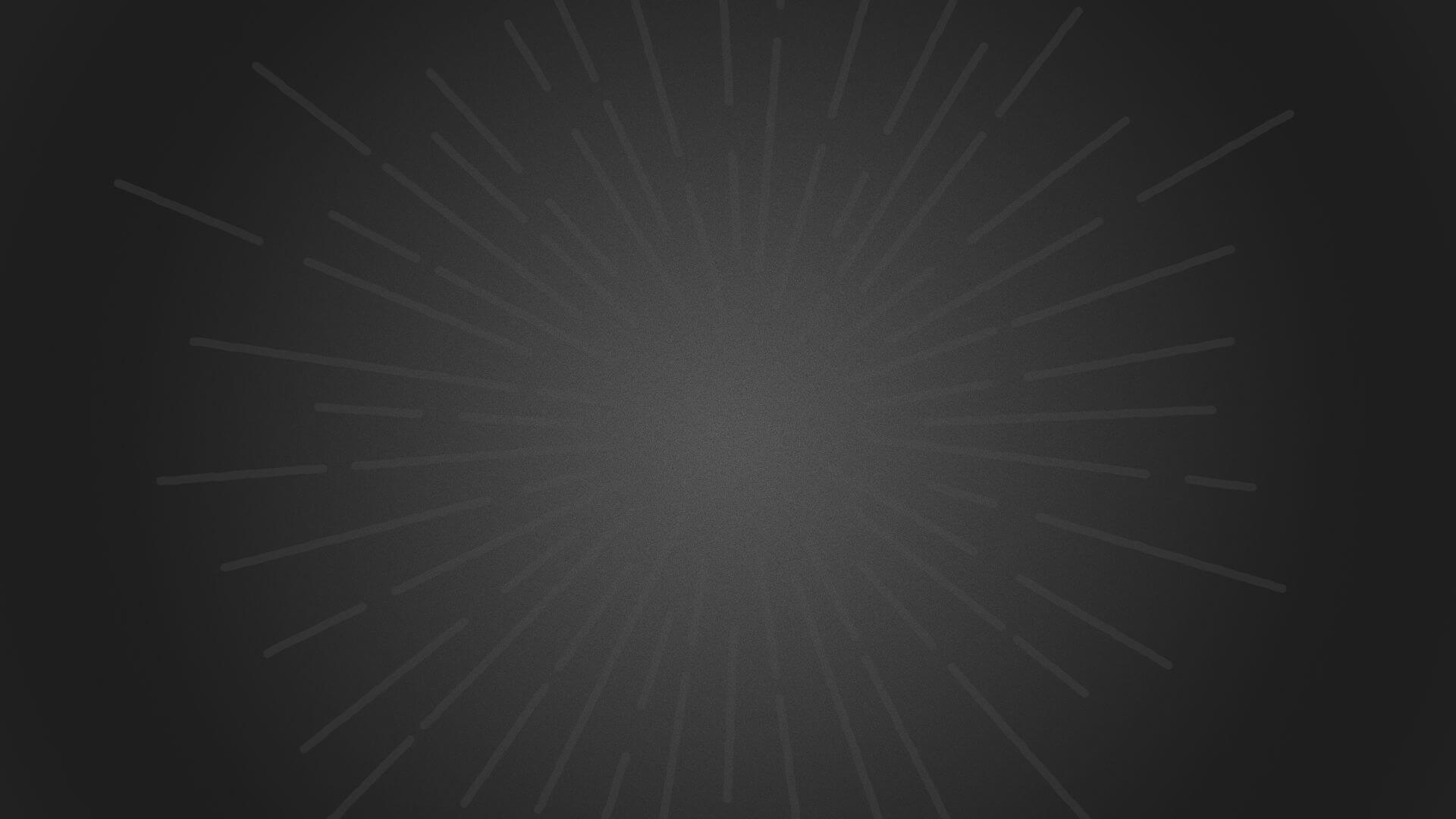
How to Reverse Pickup Polarity, Part 1: Single Coil Pickups
This is Part 1 of a 2-part series on reversing pickup polarity. This article focuses on Single Coil Pickups. For Humbuckers, see Part 2.
Needing to reverse your pickup’s phase is something you most likely never want to encounter, but it’s an essential skill to have. If you are reading this article, you most likely experienced the ‘Out of Phase’ tone:
On most guitars and styles of music, the out of phase tone is not desirable, but some people prefer it; a la Peter Green. If you do not prefer it, you may want to reverse the phase of one of your pickups to fix the problem. However, changing the phase of a pickup can be trickier than merely reversing the wires. More factors contribute to the overall phase of a guitar pickup.
In short: reversing the phase involves changing only one of the two attributes of the pickup:
- Coil Direction
- Magnetic Polarity
Let’s explore the subject in more detail!
PART 1: PICKUP POLARITY REFRESHER:
As stated in our previous article on the subject:
Pickup Polarity is the combination of the wind direction and the magnet polarity within the pickup.
Are the magnets in the pickup North Up, or South Up? Was the Pickup wound Clockwise or Counter-clockwise? To illustrate, let’s take a look at a Strat Pickup:
MAGNET POLARITY:

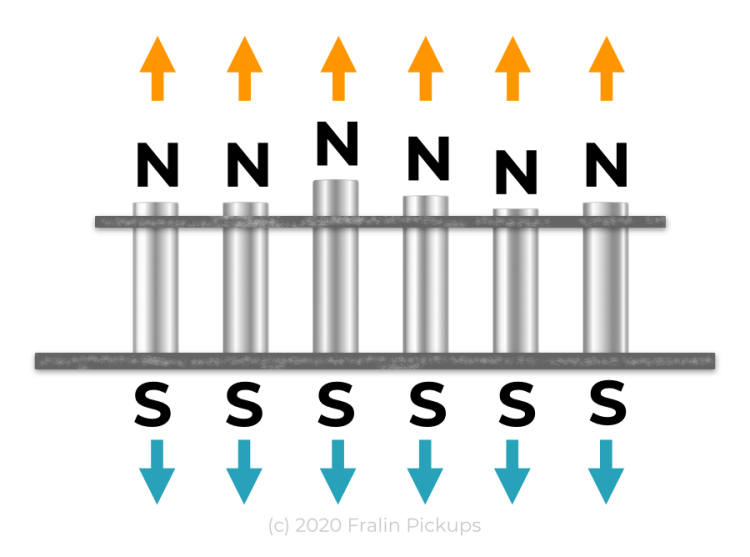
As you can see above, there are only two poles of a magnet: North and South. Most sets of pickups will have RW/RP pairs, so they cancel hum in the middle positions (think Strat or Tele). A Telecaster, for example, might have a South-to-Strings Bridge Pickup and a North-to-Strings Neck Pickup. If both pickups have opposite coil directions, the middle position is hum-canceling.
COIL DIRECTION:
The coil direction refers to the winding direction of the pickup. When you combine two opposite coil directions, you get a Reverse-Wound Pair (that’s where the RW comes from in RW / RP).
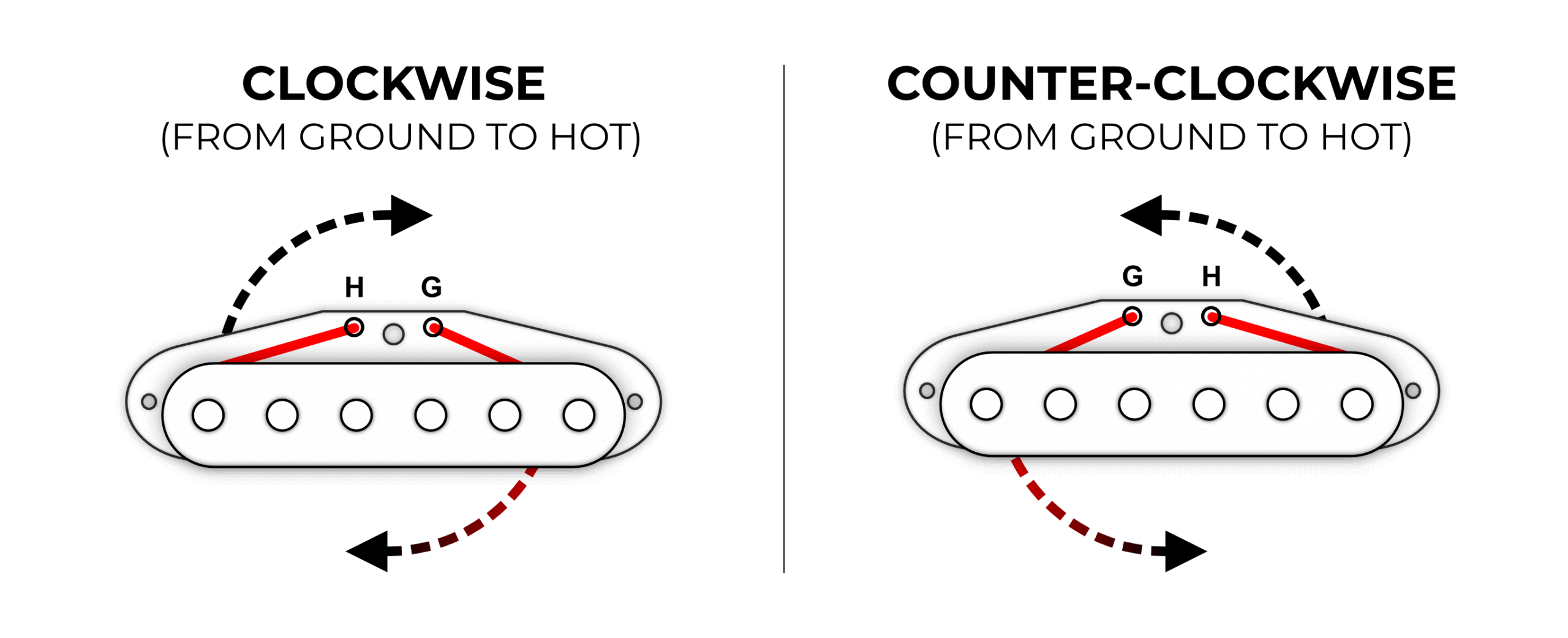
WHAT IS “PHASE”?
“The simplest way to explain phase is one pickup is ‘pushing’ on the speaker, while the other pickup is ‘pulling’ on the speaker. Due to this, frequencies are cancelled out.”
Lindy Fralin
For pickups to be in-phase and hum canceling, they need opposite coil directions and opposite magnetic polarities (RW / RP). If you meet only one of those criteria, you will experience out of phase. For instance: if both pickups have the same coil direction but different magnetic polarities, your pickups will be out of phase. Out of phase pickups sound thin and weak (listen to the sound clip above).
It’s important to note: if your pickups are out of phase with each other, reversing the phase of one pickup will fix the problem.
Two pickups that have the same polarity (both wound the same and magnetized the same), are in phase, but not hum-canceling.
CAN YOU REVERSE THE PHASE?
Yes, and no. In some instances, you can quickly reverse the phase of a guitar pickup. In other situations, it is not possible to change the phase. Once you’ve determined which attribute is the problem, you can diagnose and see if changing the phase is possible. Again, all you need to do is change one of the pickups’ attributes. Let’s start by reversing the pickup’s leads:
PART 2: REVERSING THE PHASE OF A PICKUP
REVERSING THE LEADS:
If you think the easiest way to change the phase of a pickup is to flip the leads (black & white), you’d be right half of the time. Flipping the leads on Fender pickups like Stratocaster and Telecaster pickups are more difficult than working on Humbuckers (see our article on that subject here). When we wind a Strat pickup, like our Vintage Hot, the first wraps of the coil directly contact the magnets. Now, it’s true that coil wire has an insulation, and theoretically, that insulation will prevent the coil wire from making contact with the magnets, allowing you to reverse the leads.
However, the insulation is only 1/10,000″ thick and occasionally fails. In his wisdom, Leo Fender designed his pickups to have a fail-safe. If the insulation cracks, and the coil wire does make contact with the pole pieces, they instantly become grounded, instead of hot.
Reversing the coil direction of a pickup that has a shorted magnets will result in a plethora of noise you do not want. Therefore, upon request, we can apply tape to the magnets before winding to make sure the coil can be reversed at will.
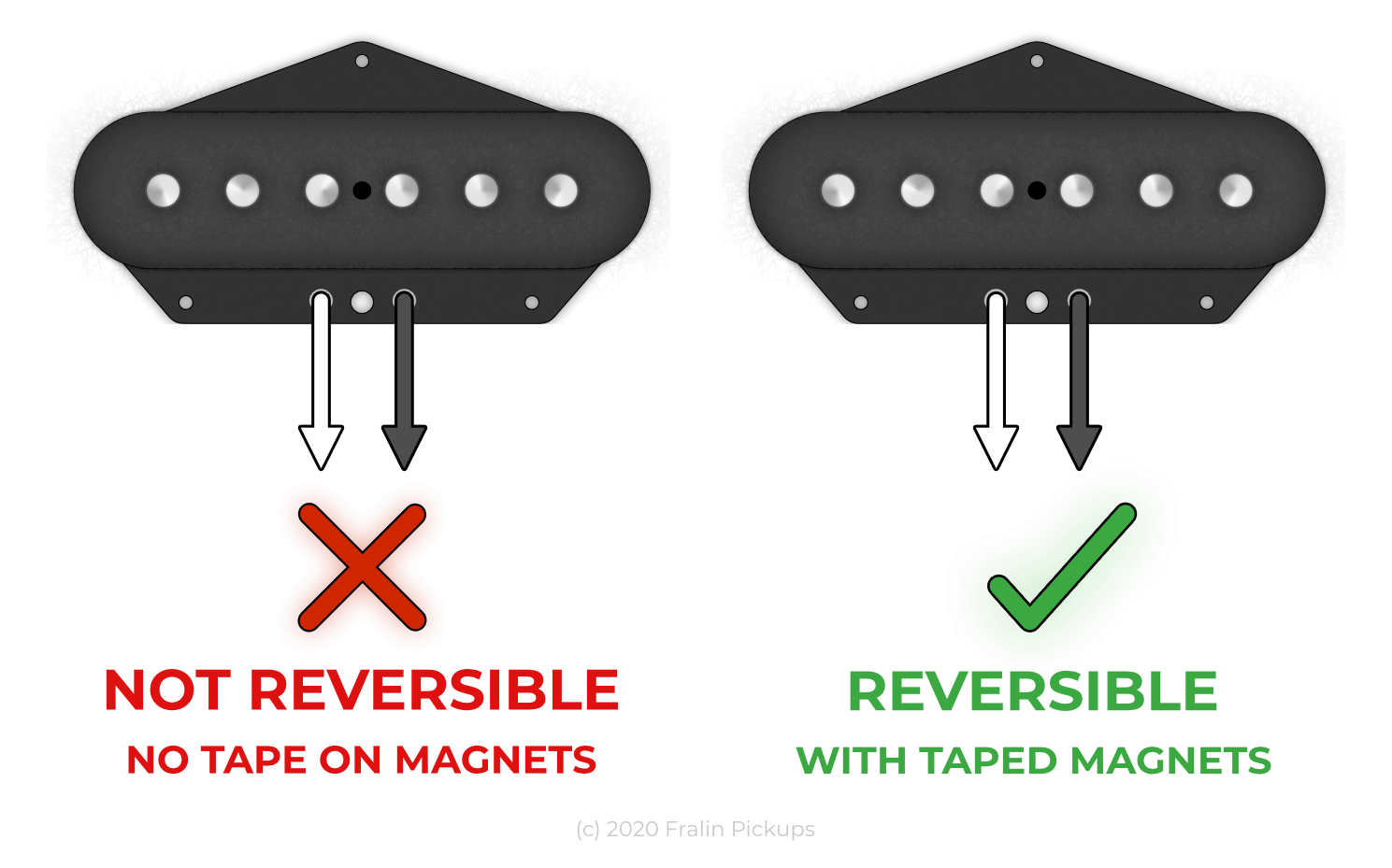
SUMMARY ON FLIPPING LEADS:
- Stratocaster and Telecaster pickups are notoriously difficult to flip the lead wires
- It’s difficult to flip the leads due to the coil wire touching the bare magnets or pole pieces
- Stratocaster and Telecaster pickups with Taped Magnets feature an easily reversible coil direction
- The coil wire does not touch the magnet or pole piece on pickups with Plastic Bobbins (P90s, Humbuckers, Steel Pole 42s, Steel Pole 43s)
- Plastic Bobbin pickups are easier to reverse the coil direction, so long as it has a separate shield from the coil wire (2-Conductor with Shield lead)
REVERSING MAGNET POLARITY:
Reversing the coil direction is only one part of the equation, and reversing your magnetic polarity is more difficult.
Strat & Tele Pickups:
Reversing the magnet polarity of a Strat or Tele pickup involves placing the pickup in a very strong magnetic field opposite to the polarity it currently has. It requires special equipment and knowledge to perform correctly.
This is not something you can do at home. Feel free to send the pickup to us, and we will re-magnetize the pickup for you. It only takes about a day or two in the shop, and is very inexpensive. Check the link below for further information.
In summary, it’s easier to reverse pickup phase with some models, and more difficult with others. Single coil pickups are notoriously difficult because they were not designed to have their phase reversed. Humbuckers are easier, but the job gets complicated when the humbucker has a cover installed.
There’s a lot that goes into reversing a pickup’s phase, and it can be difficult to wrap your head around it. If you have a question, leave it below! Until next time.
Comments
33 Comments For This Post
Leave A Comment
Want to chime in to the conversation? Please do so! Please respect others.


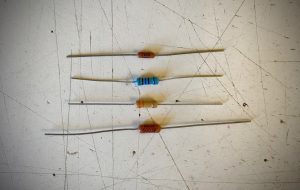
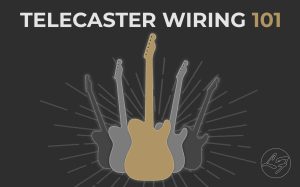
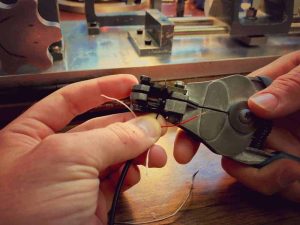
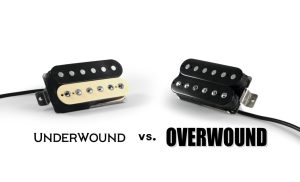

I have a couple of questions please – is the second coil in a humbucker actually wound the other way or are the coils identical but one is flipped over? Secondly, does it make an audible difference if the ground is connected to the start or end of a single coil? Thanks, John
Hello Fralin,
Thank you for these articles. I am really learning a lot here. Could you please let me know if I am correct in this:
I have a Nashville tele, and I bought new pickups for it, but I pieced them together from different sets. And so I have no noise cancellation between bridge and middle, but it is there between neck and middle. I am not hearing phase issues anywhere.
Conclusion: I need to have the bridge pickup polarity reversed while keeping all coil directions the same.
And this is what you are saying can only be done in a place like yours, right?
Hey Mikkel, yes – we’ll need to change the polarity of the Bridge to match the Neck. This would most likely require a rewind and a remagnetization of the pickup, unless you wanted to purchase a new pickup to replace your Bridge. We can make a new pickup any polarity you need.
Hello
I have a gibson nighthawk 3 pickup and it was rewired in its history wrongly
I ditched the existing and bought a Dave starr harness with standard 5 way switch , it has stock pick ups.
All great now except in bridge and middle position it sounds so weak.
I reversed the hot and earth on middle pick up and now neck and middle is weak. Neck and bridge are humbuckers , middle is single coil.
It seems like the middle pick up is out of phase with either neck or bridge and cant be in phase with both? Help?
Desejo receber informações sobre cancelamento de bobinas